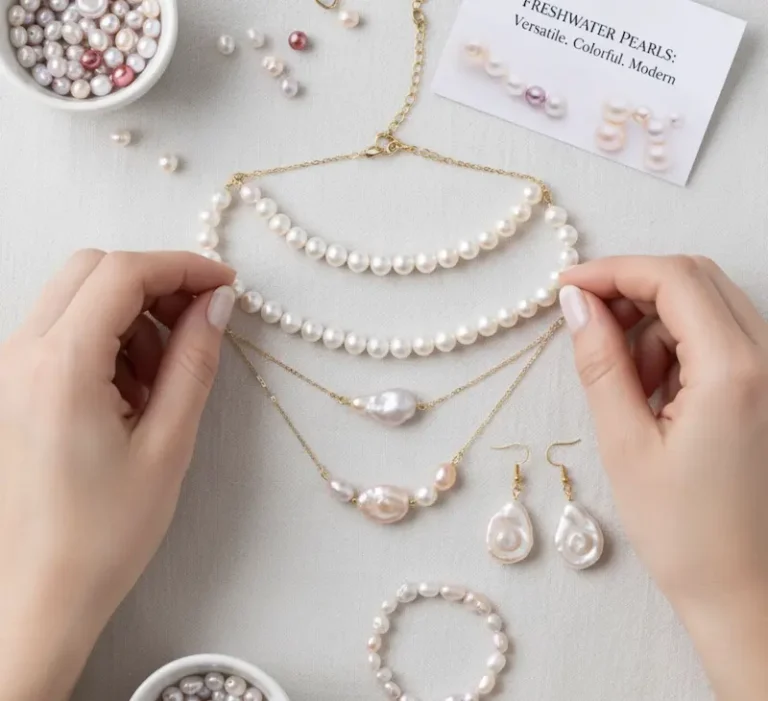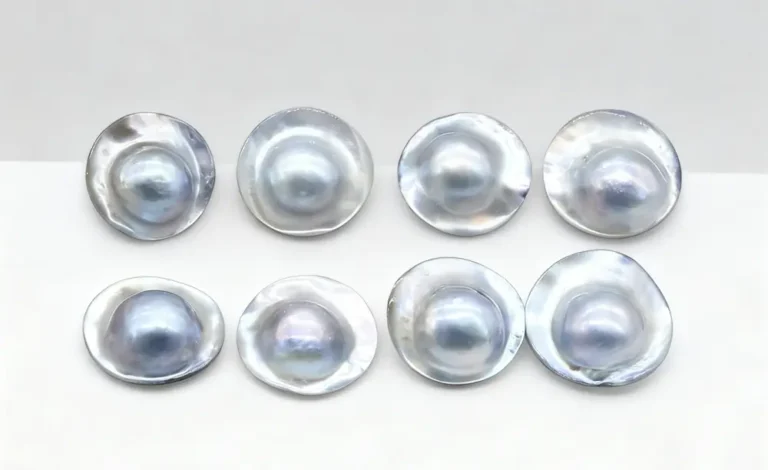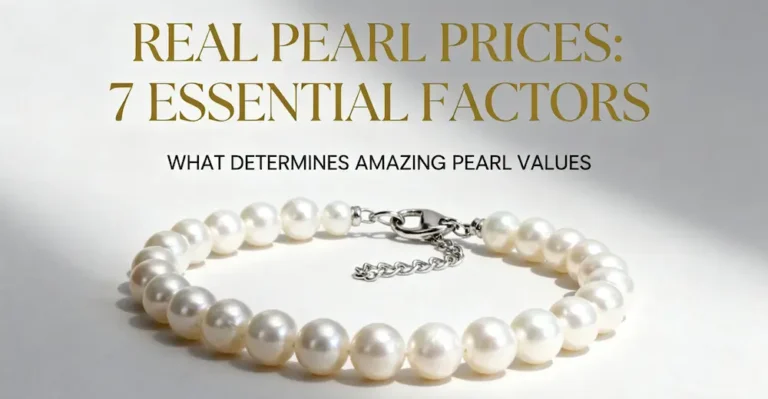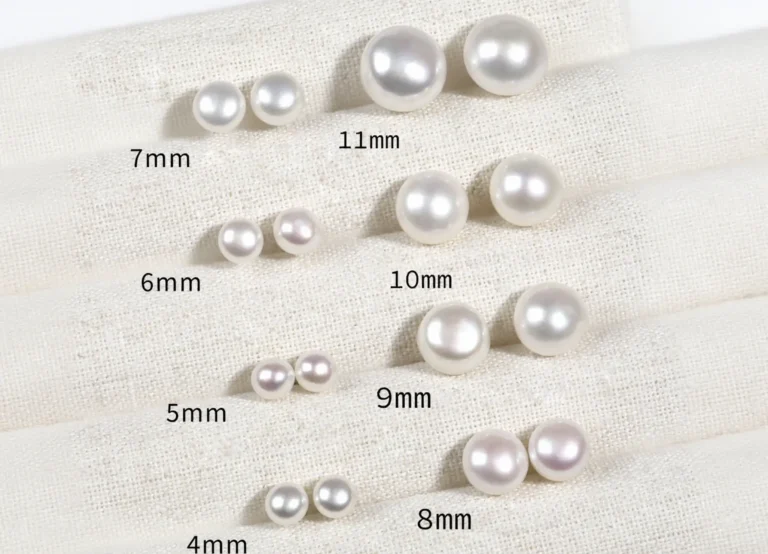If you’re looking for luxury that doesn’t break the bank and never goes out of style, you can’t beat cultured freshwater pearls. People all over the world love them because they are pretty, easy to get, and go with everything. Anyone who loves jewelry needs to have them.
These freshwater pearls are much more valuable than saltwater pearls, and they don’t lose any beauty or quality. They are grown in lakes and rivers, which makes them more environmentally friendly and less expensive than saltwater pearls. They are just as beautiful and shiny, though.
1. What Makes Cultured Freshwater Pearls So Special?
The way cultured freshwater pearls are made is what makes them so special. Freshwater pearls are primarily sourced from China. They grow in freshwater mussels on farms. One mussel can make a lot of pearls at once. It is different from saltwater oysters, which usually only make one.
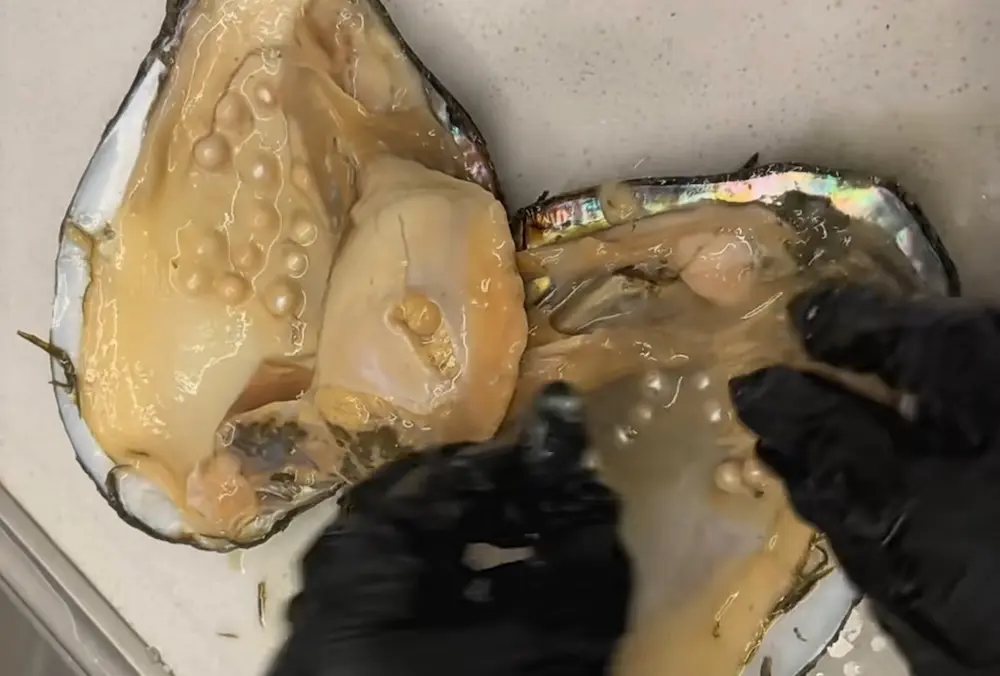
Pearl manufacturers who are very good at their jobs carefully put a small piece of tissue into mussels to start the natural process of making pearls. Over two to six years, layers of “nacre” (the pearly stuff) build up around the irritant, making the shiny, shimmering surface that we love in good-quality pearls
When you buy cultured freshwater pearls, knowing what makes a good pearl will help you make the right choice. The pearl industry judges them based on certain criteria, which affect their value and beauty.
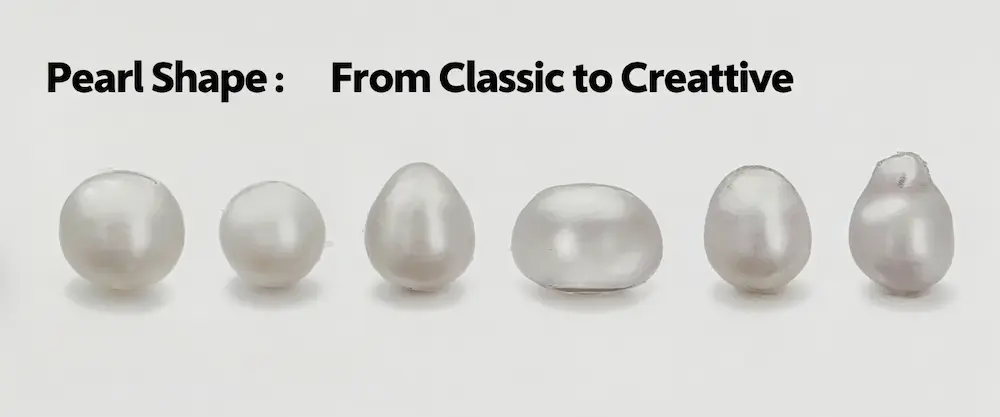
Luster and Surface Quality: “Luster” is the most important thing to look for. It’s the shiny, mirror-like quality that makes pearls so beautiful. When you look at good-quality pearls, you can see sharp, bright reflections with a good difference between the light and dark areas. “Surface quality” means how smooth the pearl is and if it has any flaws. But little flaws don’t always mean the deal is off.
Shape and Size Variations: Baroque (irregularly shaped) or semi-round pearls can be a great choice and give you a unique look for a lower price. Perfectly round pearls are usually the most expensive. There are so many different shapes, from near round to ovals to unique shapes. You can find a pearl that fits your style and budget.
2. Cultured Freshwater Pearls VS. Natural Freshwater Pearls
It’s important to know the difference between cultured freshwater pearls and natural pearls if you want to make a smart purchase. Both are real pearls that grow inside freshwater shellfish, but how they’re made and how easy they are to find on the market is very different.
Natural Freshwater Pearls: Natural freshwater pearls are quite rare. They form when something accidentally gets inside a wild mussel, and the mussel creates a pearl around it on its own. These pearls hardly ever happen naturally – only one in thousands of wild mussels will create a pearl that’s even worth anything! They tend to have weird shapes, sizes, and colors, which makes them more of a collector’s item than something you’d typically wear as jewelry.
Cultured Freshwater Pearls: Cultured freshwater pearls, on the other hand, are grown on purpose. Pearl farmers carefully insert something into the mussel to encourage it to make a pearl. Because they control the environment, they can produce pearls with consistent quality, predictable shapes, and reliable harvests. This makes beautiful pearl jewelry available to pretty much everyone!
| Aspect | Natural Freshwater | Cultured Freshwater |
|---|---|---|
| Formation | Random, wild occurrence | Controlled cultivation |
| Availability | Extremely rare | Readily available |
| Quality Consistency | Highly variable | Predictable standards |
| Price Range | $500-$10,000+ | $20-$500 |
| Shape Variety | Mostly baroque | Round to baroque |
| Commercial Viability | Limited | Excellent |
Quality and Value Comparison Cultured freshwater pearls are often better than natural ones when it comes to quality and value. The controlled environment lets farmers make the perfect conditions for the nacre, or outer coating, of the pearl to grow. This makes the pearls shinier, smoother, and just plain prettier. Natural freshwater pearls are important in history, but they don’t always look as good as pearls grown with modern farming methods.
Environmental and Ethical Considerations Remember that when you look for natural freshwater pearls, you have to disturb wild mussel populations, which can be bad for fragile freshwater ecosystems. Also, cultured freshwater pearls help with pearl farming that is good for the environment. They can even help the water systems in the area by filtering the water naturally.
3. Why Cultured Freshwater Pearls Outshine Other Options
Cultured freshwater pearls are not only better than natural ones, but they also have practical benefits that make them great for both special occasions and everyday wear.
Durability and Versatility: Freshwater pearls that have been cultured are pretty strong, with a Mohs hardness score of 2.5 to 4. That means they can handle everyday use as long as you take care of them. Also, they can be used in a lot of different kinds of jewelry, from classic pearl necklaces to more modern styles.
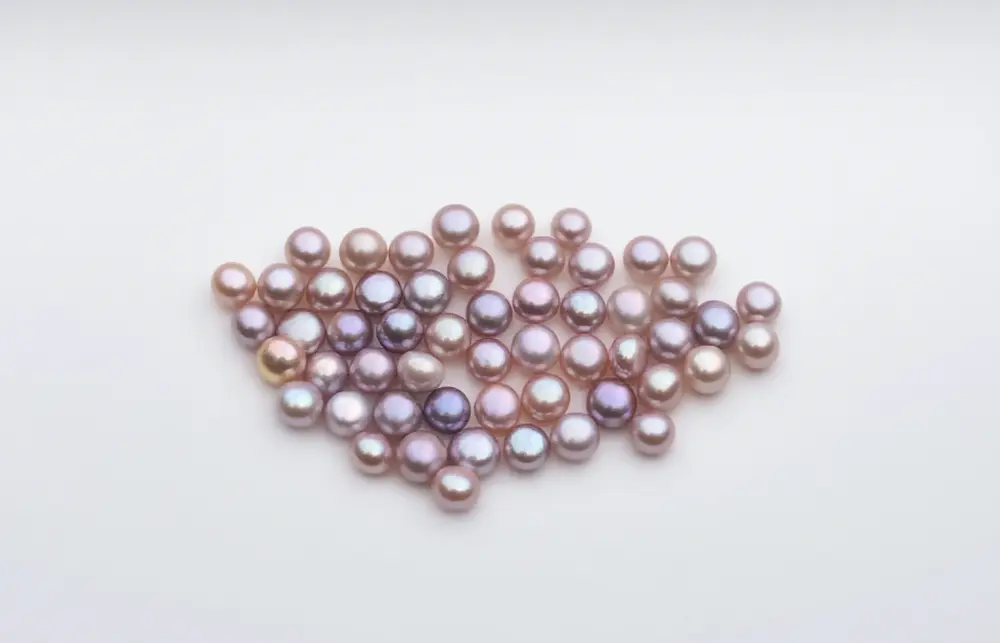
Color Diversity Like No Other: One of the best things about cultured freshwater pearls is that they come in a wide range of natural colors, including white, cream, pink, lavender, peach, and even those beautiful peacock colors. Your pearls will always look beautiful because they don’t need any artificial treatments. This is because of all the natural differences.
The Economic Advantage
What’s really great about cultured freshwater pearls is that they’re much more affordable than saltwater pearls. Akoya or South Sea pearls can cost a fortune, but you can get beautiful, high-quality freshwater pearls for way less.
| Comparison Factor | Cultured Freshwater | Akoya Saltwater | South Sea |
|---|---|---|---|
| Average Cost (8mm) | $50-$200 | $300-$1,500 | $500-$3,000 |
| Color Options | 10+ natural colors | Primarily white/cream | White, golden, silver |
| Shape Variety | Excellent | Limited | Good |
| Production Volume | High | Medium | Low |
4. Caring for Your Cultured Freshwater Pearls
To keep your cultured freshwater pearls looking beautiful for years to come, you’ll want to take good care of them. Because they’re organic, pearls need a little more gentle handling than other gemstones.

Here’s how to keep your pearls looking their best every day:
- Put your pearls on last: Always use your makeup, perfume, and hairspray *before* you put on your pearls. The chemicals in these can hurt the delicate surface of the pearls.
- Wipe them down: After you wear your pearls, gently wipe them with a soft, damp cloth to get rid of any oils or dirt.
For storing your pearls long-term:
- Keep them separate: Store your cultured freshwater pearls away from other jewelry to avoid scratches.
- Soft and safe: The best places are a soft pouch or a jewelry box with a soft lining.
- For lots of pearls: If you have a large collection (like buying wholesale pearls), wrap each piece individually to prevent them from rubbing against each other and getting damaged.
Professional Maintenance
It’s a good idea to have your cultured freshwater pearls checked by a professional every once in a while, even if you’re very careful at home. A yearly inspection can catch small problems early, and a professional cleaning can bring back their shine if they’ve become a little dull.
5. Shopping Smart for Cultured Freshwater Pearls
Shopping for cultured freshwater pearls can be tricky because there are *so* many choices, from inexpensive, trendy pieces to really high-quality jewelry that’s meant to be passed down through generations. Knowing what to look for will help you make sure you’re getting good value for your money.
Understanding Grading Systems: Okay, so when it comes to judging the quality of cultured freshwater pearls, there isn’t one single, official system everyone uses. But reliable pearl sellers will always have their own ways of figuring out how good their pearls are. So, look for sellers who give you lots of details about things like how shiny the pearls are (luster), what the surface looks like, and if you’re buying something with more than one pearl, how well they match each other. That way, you know what you’re getting!
Where Quality Meets Value : So, where do you get the most bang for your buck when buying cultured freshwater pearls? Usually, it’s in the middle price range. You can find pearls with great shine and just a few tiny imperfections that don’t cost a fortune like the totally perfect ones do. The Gemological Institute of America(GIA) even says that small differences in the surface of a pearl usually don’t change how pretty it is or how long it will last. Basically, you can get beautiful, durable pearls without breaking the bank!
Investment Potential
Okay, so you shouldn’t only buy freshwater cultured pearls as an investment, but good ones tend to hold their value nicely. What makes them do well over time? This is how it breaks down:
- Amazing shine (luster): The more brilliant, the better.
- Unusual, natural colors: If the pearl has a rare color that wasn’t dyed, it’s a plus.
- Good size (10mm+): Bigger pearls are usually worth more.
- Smooth surface: The fewer flaws, the better.
- Cool shape: If it’s a unique or really nice shape, that adds to the value.
6. The Sustainability Story
People really care about sustainable luxury these days, and cultured freshwater pearls are a great example of that. It is better for the environment to farm pearls than to dig up precious stones from the ground. Plus, many pearl farms actually help keep the water clean in the areas where they’re located.
Environmental Benefits: Freshwater pearl farms are actually good for the environment! They create homes for lots of different water creatures and naturally filter the water. The mussels they use actually clean the water by removing yucky stuff, which makes pearl farming a surprisingly eco-friendly business.
Economic Impact: The freshwater pearl industry is a real lifeline for tons of families around the world, especially in those smaller, countryside communities where they have pearl farms. It’s a way for people to earn a good living in a sustainable way, keep traditional skills alive, and bring economic opportunities to areas that really need them.
Future Trends in Cultured Freshwater Pearls
They’re always coming up with new ways to grow freshwater pearls, which is opening up a whole world of possibilities! New techniques for planting the seeds of pearls are resulting in bigger, shinier pearls. Plus, they’re carefully breeding mussels to create pearls in specific colors and shapes. It’s pretty amazing!
| Innovation Area | Current Development | Future Potential |
|---|---|---|
| Size Enhancement | 12-15mm achievable | 16mm+ possible |
| Color Control | Natural selection | Controlled cultivation |
| Shape Refinement | Improved rounds | Custom shapes |
| Luster Quality | Enhanced techniques | Mirror-like finish |
7. Making Cultured Freshwater Pearls Part of Your Style
Cultured freshwater pearls are so adaptable that they can work with pretty much any style or occasion. Whether you’re going for a classic and elegant look, or something more modern and trendy, these gems can be styled to perfectly match your personal taste.

Classic Applications: You can’t go wrong with the classic ways of wearing freshwater pearls. Think of a simple string of pearls, those timeless pearl stud earrings, or an elegant bracelet – they always look good and work perfectly with both your work clothes and your fancier outfits. They just never go out of style!
Contemporary Styling: These days, jewelry designers are really getting creative with freshwater pearls, making pieces that appeal to a younger crowd while still keeping that sophisticated pearl vibe. Think layered necklaces, earrings that aren’t quite the same, and combining pearls with different metals – it’s a fresh, new take on pearl jewelry!
Building Your Collection
You don’t have to spend a lot of money to start your own collection of freshwater pearls. A good place to start is with some simple, useful pieces. For example, a string of classic round pearls that are 7 to 8 mm in size and cream or white in color. You can then add pieces that really show off your style and fit in with your daily life as you go.
One of the best things about collecting freshwater pearls is how different they are. Every new piece you add can change the color, size, or shape of your jewelry, giving you more ways to style it while still keeping a neat, consistent look.
When you want to add to your pearl jewelry collection, it’s best to buy from reliable sellers. They can tell you what makes a pearl good and help you pick out pieces you’ll love.
Freshwater pearls aren’t just pretty accessories. They bring personal satisfaction, and often their value increases over time. Whether you love their natural beauty, their sustainable production, or how versatile they are, these amazing gems are worth considering for any jewelry collection.
When you dive into the world of freshwater pearls, you find layers of beauty, history, and new ideas that are always changing. These gems are just as popular now as they were a long time ago. This is because the way they are grown is getting better and designers are coming up with new ways to show off how pretty they are. This shows that real beauty lasts longer than fads and works in any culture.
FAQs:
Q: Are freshwater cultured pearls any good?
A: Yes—top-grade (AAA-AAAA-AAAAA) freshwater cultured pearls are lustrous, 100 % nacre, durable.
Q: Are cultured pearls worth anything?
A: Yes; $50–$165,000 depending on size, lustre, and origin.
Q: Are freshwater pearls considered real pearls?
A: Yes, they grow inside live mussels and are 100% real.
Q: Why are cultured pearls so cheap?
A: One mussel yields up to 50 pearls and shorter growth cycles create high supply.

